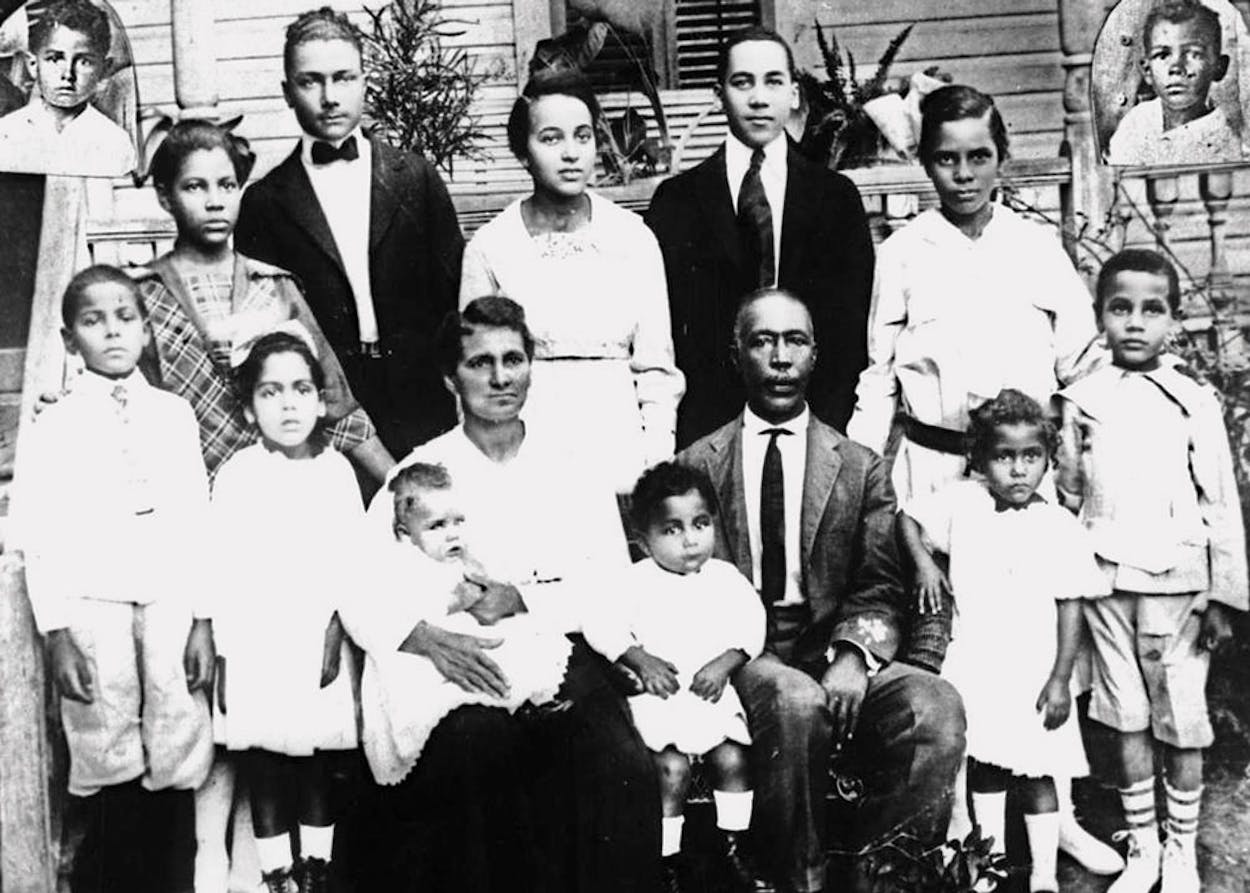For much of San Antonio’s history, to be black and live on the city’s East Side, the historical and spiritual home of African Americans, was to feel as if one were living on the outskirts of the city’s concern. One troubling example occurred during San Antonio’s last celebration of a major birthday, in 1968. That year, the city hosted the World’s Fair, and in preparation, officials decided to convert Commerce Street, the main artery connecting the East Side and downtown, into a one-way road flowing toward downtown—and away from black-owned businesses. So it’s remarkable that, at the turn of the twentieth century, a community long excluded from San Antonio produced a family way ahead of its time.
Samuel J. Sutton, the son of a slave, was born in Virginia, in 1863. He operated a gold mine in Mexico before moving to San Antonio to become an educator. At Guadalupe College, in Seguin, he met another young teacher, Lillian V. Smith, of New Orleans. Over the next several years, they got married, settled on the East Side of San Antonio, and started a family. They had twelve children, and all those who lived to adulthood went to college. The couple also became serial entrepreneurs, eventually owning a skating rink, funeral home, mattress company, and farm. As prominent figures in the community, they often hosted luminaries like Booker T. Washington, Mary McLeod Bethune, and Thurgood Marshall.
According to the family, when the Suttons’ next-to-youngest child was born, one of their frequent guests said, “You give that one to me. I want to be responsible for him.” The couple didn’t relinquish their child, but they did allow George Washington Carver to become Alexander Carver Sutton’s godfather.
Samuel taught at the city’s first black high school and for the next 54 years served as the principal of three San Antonio schools. The couple’s children said that their parents ingrained in them the conviction that with opportunities come responsibilities, and each child, as he or she finished college, was expected to help pay the way for younger siblings. John, the oldest, was an agriculture specialist and science instructor and a protégé of George Washington Carver. Oliver was elected to the New York state Supreme Court. Lillian Sutton-Taylor educated generations of San Antonio children. Garlington Jerome became the first black state legislator from San Antonio. Percy, the youngest, served in World War II with the Tuskegee Airmen, and after the war became Malcolm X’s attorney, Borough President of Manhattan, and the head of a business empire that included ownership of the Apollo Theater.
In 2010, Essie, the last of the surviving Sutton children, died at the age of 93. But the Sutton family legacy lives on, a bright spot in San Antonio’s past and a symbol of promise for its future.
More from this collection
San Antonio at 300
From billionaire Kit Goldsbury to artist Ana Fernandez to former NBA All-Star Tim Duncan, seventeen San Antonians reveal why their historic city may be the most interesting place in America right now. Read more.







